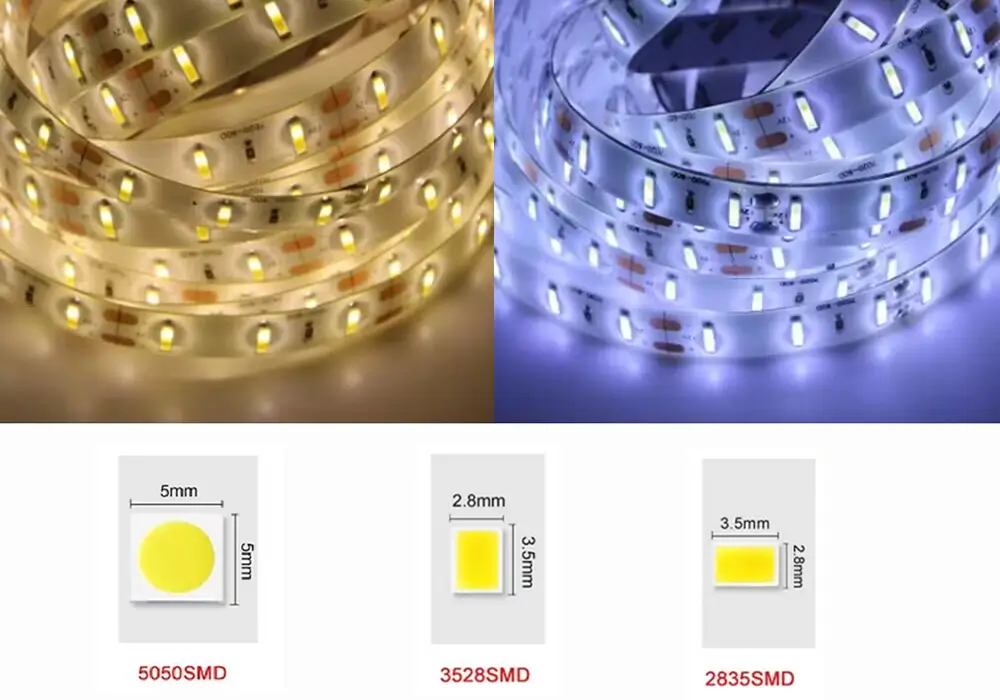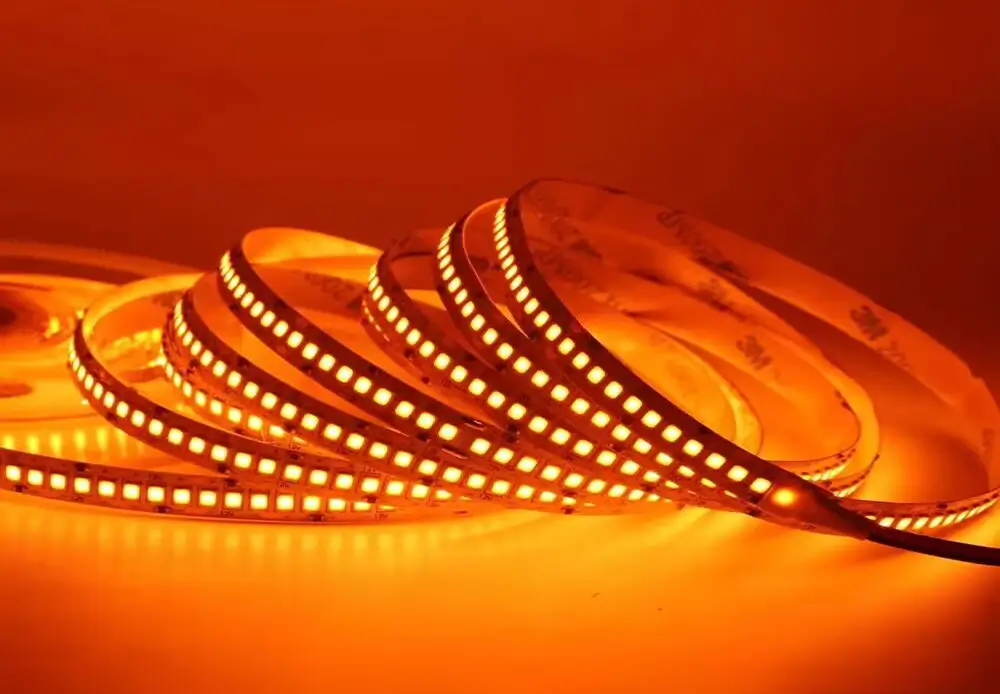
When you’re shopping for LED strip lights, you’ve probably noticed they usually have a four-digit number on the box or in the product listings. For example, SMD 5050, 3528, and 2835?
The LED number is a four-digit number that indicates the size of the LED. There are different LED sizes on the market, with SMD 5050, 3528, and 2835 being the most common. Taking SMD 3528 as an example, the width is 3.5mm and the length is 2.8mm.
Similarly, 2835 and 5050 represent chip sizes of 2.8mm*3.5mm and 5.0mm*5.0mm respectively. In addition to size, these numbers represent different properties of the LED. So, what do they mean, their properties, and how do they differ? Let’s check together now.
SMD5050
SMD 5050 is very popular in the market, and the degree is second only to 3528 LEDs. The size is 5.0mm x 5.0mm. It is typically three times brighter than 3528 LEDs. There are many customers who choose a strip with 5050 LEDs for “task lighting” because of its brightness. Often under kitchen cabinets, led strip lights can help you see exactly what you want to see.
5050 strips are also often available in RGB LED strip lights styles, which means you can use the remote or controller to choose any color you want. There are also RGBW and RGBTW color options. So it is more used in bars, restaurants, and hotels to create an atmosphere.

SMD3528
SMD 3528 is the most common on the market. It is 3.5mm wide and 2.8mm long. These LEDs contain a diode within each LED. Due to the small size of these chips, there are typically 60 LEDs per meter.
But you can also add more of these chips per PCB foot. These LED strip lights are 180 LEDs per meter and 240 LEDs per meter which is popular with customers. It can also reach 360 LEDs per meter and 480 LEDs per meter. With very high density, and no lighting spots. In addition, it can also do high CRI, reaching CRI>95+ with real color. And it supports custom color temperature, most LED light colors for optional.
SMD2835
SMD 2835 means the LED is 2.8mm wide and 3.5mm long. It looks very much like a 3528 chip. And the latest technology in 2835 makes it even more reliable and stable. Now it also extends to many other LED strip lights types.
SMD2835 is more power efficient and brighter than SMD 3285. For LED strip lights, SMD 2835 is a popular size. It can also be up to 120 LEDs per meter and 240 LEDs per meter.
Additionally, it includes high-output LEDs with a long lifespan. This means they can be brighter at the same power. In fact, it is a good choice in task lighting.
SMD 5050 vs 3528 vs 2835?
I believe that many people have seriously compared these three models: SMD 5050 vs 3528 vs 2835. In fact, it is impossible to say which leds model is better. The main thing is to choose the most suitable LED strip light model for you according to your needs.
SMD2835 uses the latest technology to produce more uniform and bright lighting. It generates much less heat than SMD3528 due to its thin size and larger cooling area.
SMD5050 produces three times the illuminance of the SMD3528. Therefore, it is more suitable for ambient and task lighting. And the SMD5050 can have single color and RGB LED strip lights effects at the same time.
SMD3528 is also very popular in the market at present. The main reason is that its performance is very stable and its cost performance is very high. If you want high-density single color LED strip lights, the SMD3528 is an ideal choice.
Higher Density vs Bigger LED Chips?
LEDs Density simply refers to how many LED chips are on the strip. The standard tends to be 30 LEDs per meter, but you can get strips of 60, 120, or even more.

The biggest benefit of high-density LED strips is more uniform lighting. The closer the LEDs are arranged, the more the light will appear as a continuous light source.
It depends on the effect you want to choose. Some LEDs have high brightness, and the distance between the LEDs is not so dense, and it is also difficult to see the light spots. Some projects require high-density LED strip lights, but they don’t pay much attention to brightness, so you can consider high-density LED strip lights.
Conclusion
While the most obvious difference between SMDLEDs 5050 vs 3528 vs 2835 LED strip lights is the size of the chips. This actually has a big impact on brightness, power efficiency, and how many LEDs you can fit in a LED strip.
Of course, you also need to consider other important factors. Including you have to choose the suitable color temperature, temperature, voltage, higher CRI, and so on.
FAQs
SMD LEDs are more energy efficient than COB LEDs and have color temperature variation options. However, COB lighting it can make the light uniformity better.
The 5630 LED brightness is the brightest of all LEDs.
The most common on the market is the SMD3528.
Of course, it does, today’s LED lighting gets hot. Still, ambient heat is drastically reduced when using LED lighting compared to older incandescent bulbs.
While the 5050 chip can be used in single-color and RGB applications, the 3528 SMD LEDs in high density better for single-color and high-density applications.
